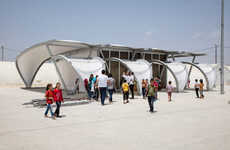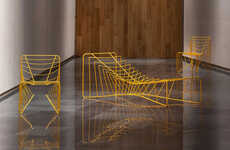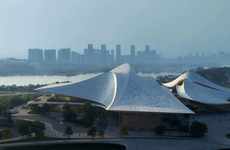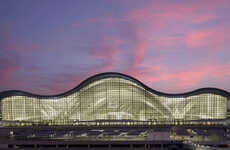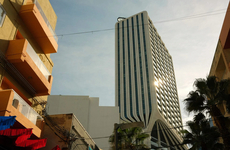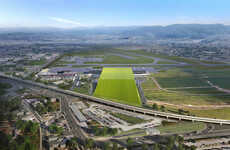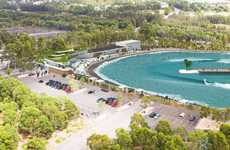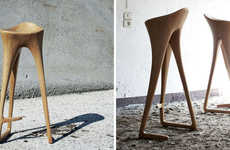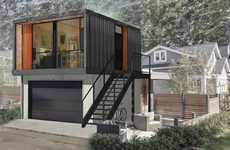
The Salerno Terminal Uses the Late Zaha Hadid's Design Language
Rahul Kalvapalle — April 26, 2016 — Art & Design
References: zaha-hadid & gizmag
The Salerno Maritime Terminal is the first project completed by Zaha Hadid Architects since Hadid's death. Inaugurated by Italian Prime Minister Matteo Renzi, the project took 16 years to complete and bears all the classic design hallmarks of the late and great Iraqi-British architect.
Part of a redevelopment program in the area, the Salerno Maritime Terminal takes the form of a three-story building that stands out for its 20-meter cantilevel as well as its asymmetric, oyster-like shell on top. The project pays heed to Zaha Hadid's usual design language, meaning that curves are an integral part.
Ultimately, the Salerno Maritime Terminal is a moody and beautiful structure that is an appropriate posthumous celebration of Hadid's architectural legacy.
Part of a redevelopment program in the area, the Salerno Maritime Terminal takes the form of a three-story building that stands out for its 20-meter cantilevel as well as its asymmetric, oyster-like shell on top. The project pays heed to Zaha Hadid's usual design language, meaning that curves are an integral part.
Ultimately, the Salerno Maritime Terminal is a moody and beautiful structure that is an appropriate posthumous celebration of Hadid's architectural legacy.
Trend Themes
1. Posthumous Architecture - Opportunities to celebrate the architectural legacy of late architects through posthumous projects.
2. Asymmetric Design - Designers can experiment with non-traditional, asymmetric design features to create unique and standout structures.
3. Curvilinear Aesthetics - Designers can incorporate curvilinear design elements to create visually appealing and iconic structures.
Industry Implications
1. Architecture - The architecture industry can explore opportunities to embrace the legacies of late architects and continue to innovate.
2. Construction - The construction industry can experiment with non-traditional design features to create standout structures.
3. Art and Design - Artists and designers can draw inspiration from curvilinear aesthetics to create visually dynamic works that challenge traditional design norms.
4.7
Score
Popularity
Activity
Freshness


